Backyard Rabbit Keeping, Part 15/15 – Angoras
Angora rabbits have a long history. They are one of the oldest breeds and it is thought that they were kept for wool in Roman times. For hundreds of years, breeders in France have kept them and exported some of the wool to Britain, often in a yarn which was a mixture of Angora and sheep’s wool. Most Angoras you see are white, but they can be in any of twelve colors. The wool can be as long as six inches, with feathery plumes on the ears and feet called ‘furnishings’. They seem to be particularly docile, sweet-tempered animals.
Do you feel that you would like to keep rabbits and not necessarily kill them? As a backyarder no doubt you would like to keep them for practical reasons rather than just as pets. In this case Angora rabbits might be a possibility.
People who keep Angoras say that hard work is involved. I think that they refer particularly to keeping them in show condition. There are two ways to keep them; for show, in which case the coat is kept at full length, and for wool. Keeping a show coat clean and free from tangles is quite a job. Ordinary working Angoras, called ‘woollers’, are relieved of their wool every three months or so and consequently their coats are short, although they too have to be kept clean for the production of high grade wool.
Since about 1920 Angoras have been kept in Britain and America, and since then they have made a name for themselves at shows, where they are always a great attraction. Show-coated Angoras are groomed with a pair of bellows or a vacuum cleaner. Air is gently blown through the coat to straighten out the tangles. These rabbits are kept in roomy hutches with wire mesh floors to keep them clean and hay is fed in racks to prevent it getting into the coat.
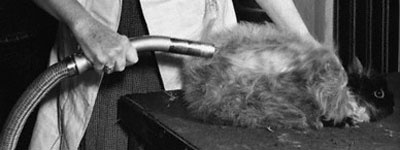
Angoras can be clipped or plucked, in America plucking seems to be popular but in Britain they are usually clipped with sharp scissors. As it comes off, the wool is sorted into grades, which depend on the staple length, the degree of cleanliness and matting, and the fineness, which varies on different parts of the animal.
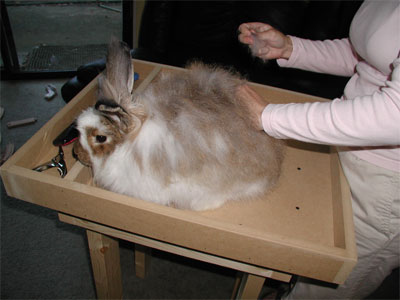
Clipping is the quicker method, a rabbit can be done in under half an hour. But the highest grades of wool are usually plucked, and plucking is the method used in France and America. It is done when the wool is ‘ripe’ and at this stage it is already coming loose and does not take much detaching. The wool is pulled away gently with one hand in the direction in which it grows, while the other hand holds the skin to stop it stretching. Plucking is often done over a period of days, since all the wool may not be ripe at once. The rabbit sits quietly during the operation, which is quite painless. When the wool is plucked, the oil gland at the base of the hair comes with it and this apparently imparts more ‘life’ to the wool. The rabbit is left with rather more wool when clipped than when plucked, but it is said that plucking results in quicker growth.
American Angoras are bigger than British ones and they tend to yield more wool. In Britain you can expect perhaps 9 oz of wool per year; not much perhaps, but if it’s mixed with sheep’s wool it will go further.
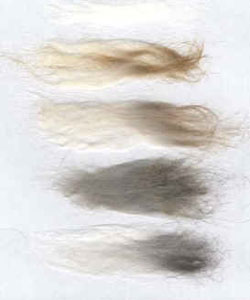 You can sell the wool when it’s sorted into grades, but it may be more interesting to use it yourself. Why not learn to spin? A spinning wheel is a beautiful thing to have and may already form part of your equipment. However, they can be expensive as a hobby only. An option for beginners is the to learn is with a spindle, one of Man’s oldest tools.
You can sell the wool when it’s sorted into grades, but it may be more interesting to use it yourself. Why not learn to spin? A spinning wheel is a beautiful thing to have and may already form part of your equipment. However, they can be expensive as a hobby only. An option for beginners is the to learn is with a spindle, one of Man’s oldest tools.
For thousands of years, before the invention of the spinning wheel, clothes were made from yarn spun on a spindle. A simple one can be made by sticking a knitting needle through half a potato, but more durable ones can be bought online or at craft fairs. There is now a revival of interest in old crafts such as spinning and weaving, and plenty of information and advice is available.
Spinning is basically a twisting of the short fibers to form a long continuous yarn, which can then be knitted or woven into a garment. Sheep’s wool has to be carded before spinning to get all the fibers to lie parallel, but with Angora wool, all you need to do is to fluff it up a little. It can be spun with fluffing. The mass of wool is held in one hand, with the end joined to a yarn already on the spindle. With the other hand you set the spindle whirling and then reach up and pull down the fibers gently. The spinning action twists them into a yarn.
There are several Angora breeders who spin their own wool, and you may be able to see them demonstrating at some of the bigger rabbit shows.
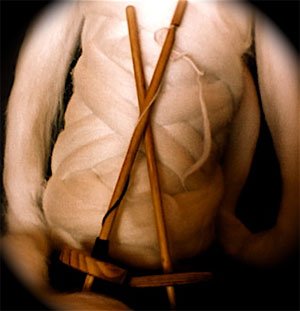 Vegetable dyeing is another gentle art that some people practice on Angora wool. Common plants such as blackberries and marigolds can be boiled up and used to dye your wool; usually the yarn has to be mordanted to give a base for the dye to stick to. Traditional mordants were salt and rusty nails. Alum and chrome are two chemicals which can be used, but beware of poisonous chrome. Different plants need different mordants, and changing the mordant with the same plant may change the final color. There are several books available on the subject of vegetable dyeing and they should be studied before you embark on a dyeing project.
Vegetable dyeing is another gentle art that some people practice on Angora wool. Common plants such as blackberries and marigolds can be boiled up and used to dye your wool; usually the yarn has to be mordanted to give a base for the dye to stick to. Traditional mordants were salt and rusty nails. Alum and chrome are two chemicals which can be used, but beware of poisonous chrome. Different plants need different mordants, and changing the mordant with the same plant may change the final color. There are several books available on the subject of vegetable dyeing and they should be studied before you embark on a dyeing project.
Much Angora wool is knitted up into fluffy baby clothes, but of course the more sheep’s wool you use with it, the further it will go. Knitting is another good old-fashioned art, and not to be despised! In all there are plenty of skills arising from the keeping of Angora rabbits to keep you busy and interested for a lifetime.
- Why Why Keep Rabbits?
- Rabbits Past and Present
- Some Basic Information
- Making a Start
- Housing
- Feeding
- Growing Crops for Rabbits
- Breeding
- Health
- Harvesting the Wild Rabbits
- The Harvest
- Using Rabbit Meat
- Fur Production
- Showing
- Angoras
 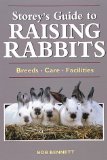 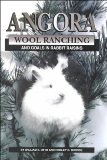 |